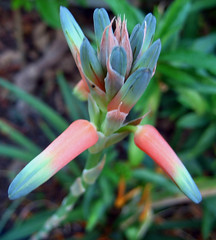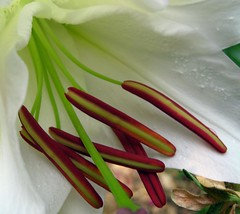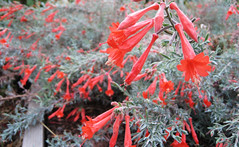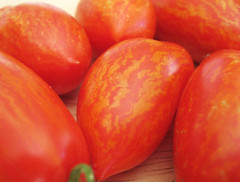Finally, after eighteen months, I got my first "butterfly ginger" (
Hedychium coronarium) flower. The smell is amazing, very like gardenia. But I suspect it will never be terribly free-flowering here, so we are talking about a lot of water for a paltry return, however beautiful.
[Furthermore, this flower turns out not to be the mysterious "mariposa" that I was looking for, although it is also fragrant and white and called a mariposa in Mexico.]
So the jury is still out... H. gardnerianum flowers better here, I think, but the color is a little dreary... Maybe 'Tara' has more going on.
Which brings us to a small dilemma. The ginger is currently in a large pot (fear the rhizome) next to a small bed of Casablanca lilies. The first one opened this morning, 1 day after the ginger. (If they all get going at the same time I will probably just keel over from aromatic overload). There is some room around the lilies for companion plants, but the question is what. I try to make sure they're (relatively) dry in winter and (more or less) well-watered in summer, i.e., the opposite of my climate. It would be nice to have something to look at when the lilies die back.
Intoxicated gardener (and lily freak) Elizabeth and Saskatchewanian (?) Kate have kindly offered some interesting suggestions, but the more the merrier! [Also -- I say this as gently as possible -- their ideas of winter interest are perhaps obscured by a bit more snow than the average Californian's].
Labels: casablanca, companion plants, ginger, hedychium, lily






